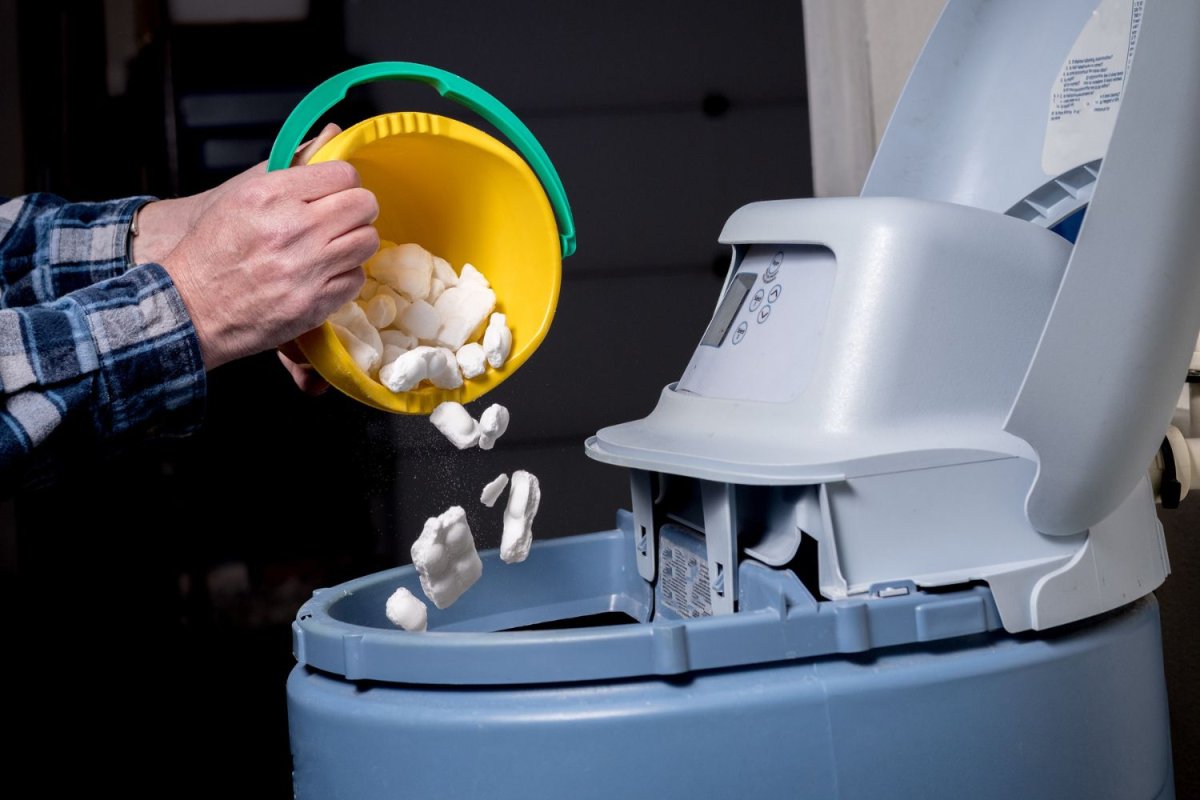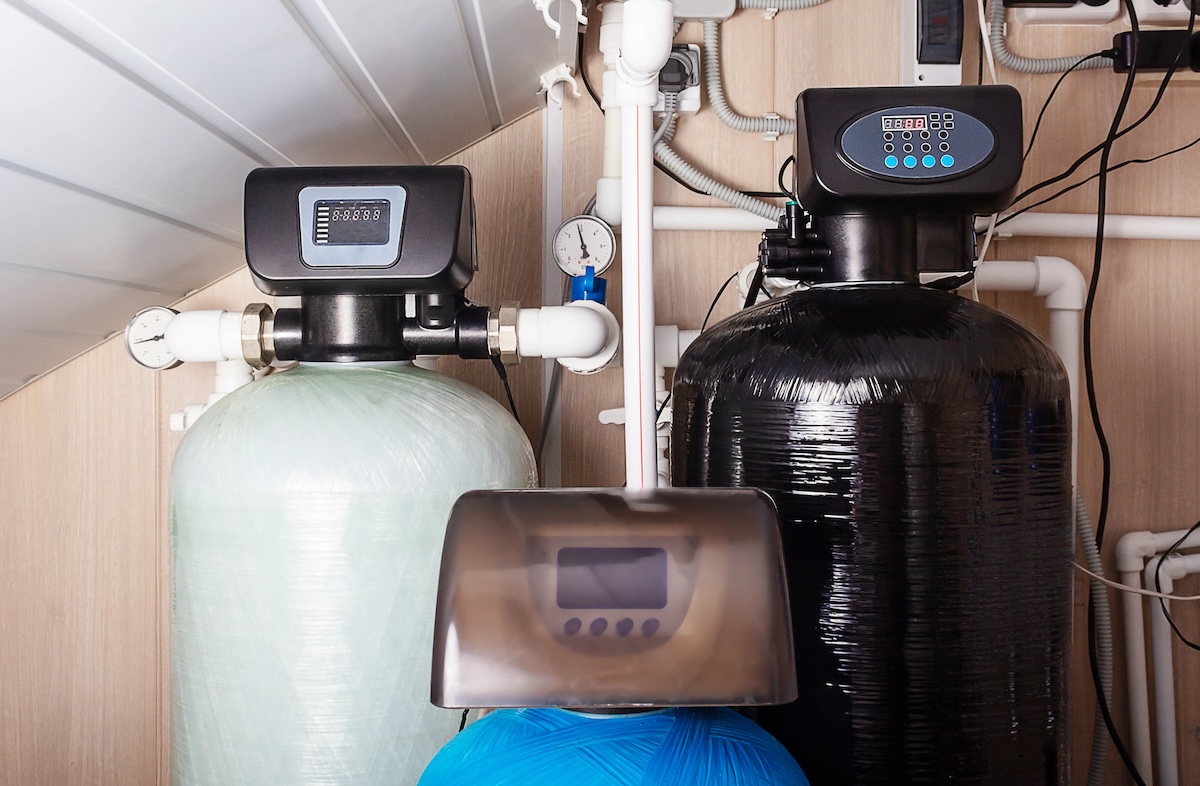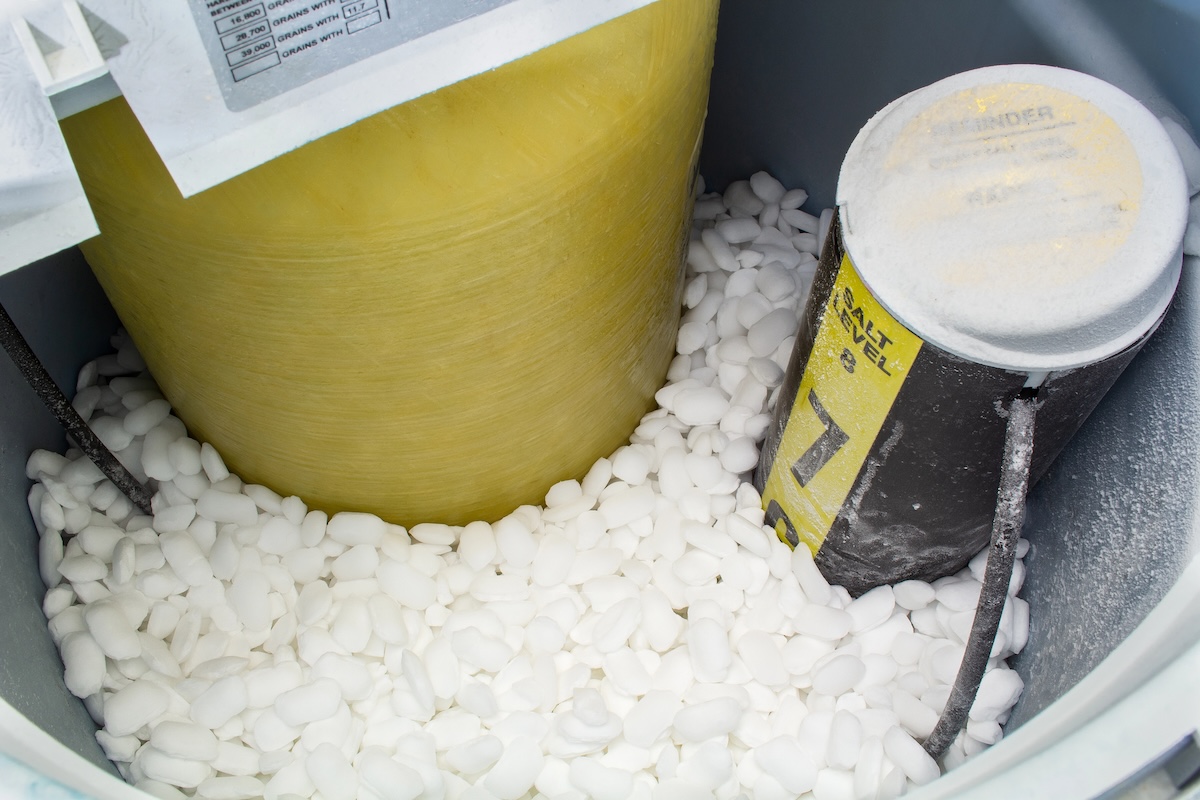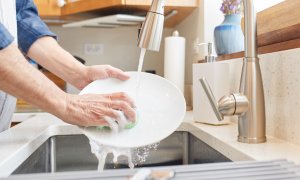

We may earn revenue from the products available on this page and participate in affiliate programs. Learn More ›
The incoming water for the home can vary in hardness, which refers to the concentration of dissolved minerals in the water, with some homes requiring a form of water hardness treatment. This is where a water softener system is put to good use to remove the minerals that cause hard water from your water supply.
While there are several water softener types, they are all used to create softer water for the home, reducing potentially long-term damage caused by hard water. However, you need to determine water softener size before purchasing or installing one of these systems. Use this guide to discover how to size a water softener properly, so you can treat hard water problems.
Test Your Home’s Water Hardness
Finding out the water hardness of your home is essential for selecting the best household water softener. This is because the water hardness level is an indication of the amount of the hardness minerals the whole house water softener will need to remove. To find this information, you can look up your local water quality report or have a professional test your water to find your water hardness measured in grains per gallon (GPG).
Danny Penn, plumber and president of New Era Plumbing & HVAC in Dracut, Massachusetts, also mentions that “for most homes on city water, a basic $10 water hardness test strip is all you need. Just run cold water from the tap and dip the strip for a few seconds. The color chart will tell you how hard your water is in GPG. If it’s 7 GPG or higher, you’ll benefit from a softener.”
Consider Your Household’s Water Consumption

The next factor to consider, regardless of whether you are investing in a salt-free water softener or a salt water softener, is the overall water consumption for the household. Penn explains that “the more water your household uses, the more capacity your softener needs. And it’s not only about the number of people living in the house, but also their real habits. A lot of water softener size calculators say to multiply 75 gallons per person per day, but that doesn’t work if you’re watering the garden, running sprinklers, or doing laundry a couple of times a day.”
To be as accurate as possible, it’s recommended to look at your water bill. The amount of water that you used should be listed. If it is given as a total monthly usage, then divide the monthly usage by the number of days in the billing period to get your daily usage for the household. If the water softener is for well water, then you may need to install a water meter to find out the exact usage or simply go with the national average water usage, which is 82 gallons of water per day per person, according to the EPA.
Calculate the Appropriate Water Softener Size
Once you know the water hardness in grains per gallon, as well as the water consumption for the household in gallons, you can use these numbers to calculate the appropriate water softener grain capacity. The grain capacity of a water softener refers to the amount of hardness minerals the softener can remove before regeneration (cleaning of the resin beads) is necessary.
Multiply the daily water consumption for the household by the water hardness level to calculate the daily softening requirement. For instance, if the home uses 320 gallons of water per day and the water hardness is 7 GPG, then you multiply 320 by 7 to find out that the daily softening requirement is 2,240 grains per day. So, in this example, 2,240 grains will be the capacity the water softener needs to handle daily for it to be efficient for your home.
Additionally, you can use this calculation to determine how frequently the water softener would need to regenerate. For example, if your water softener has a grain capacity of 32,000 grains and the daily softening requirement is 2,240 grains, then your system would need to regenerate about once every 15 days.
Water Softener Benefits
Homeowners who are looking for solutions for home water supply problems may ask what is a water softener and how does it benefit the home? Penn answers that “if you want softer water, you need a water softener, but if you need cleaner water, you need a filter—this is what many people still misunderstand. A water softener prevents hard mineral buildup and removes calcium and magnesium but a water softener won’t filter your water—it doesn’t remove chlorine, bacteria, or iron stains.”
Additionally, homeowners who are considering installing a water softener system should factor in these other water softener benefits that make it well worth the cost of a water softener system, including:
- Improved skin and hair condition
- Reduced soap scum and mineral buildup
- Extended lifespan of water-using appliances
- Reduced energy consumption for hot water needs
- Less scale buildup inside the pipes
- Improved water flow
- Reduced risk of plumbing problems
- Improved water quality, water appearance, and water taste
- Lower soap and detergent costs
- Bright clothes, linens, and other laundry
- Reduced water spots
Why Water Softener Size Matters

When you are investing in a water softener to help manage the home’s water supply, it’s important to ensure that the softener is the correct size. ”If your softener’s too small, it’ll regenerate too often, wasting salt and water,” says Penn. “If it’s too big, it won’t cycle often enough and the resin bed can get dirty or develop bacteria.”
A water softener that is too small may also lead to untreated hard water in the home, reducing the impact of having a water softener at all, while the increased demand for the water softener to constantly work hard will cause it to wear out faster over time. If the water softener is too large you may also run the risk of channeling, which occurs when the water flows through a narrow path in the softener instead of spreading out through the entire resin bed, causing the beads to clump together, while reducing the efficiency of the water softener.
Water Softener Maintenance Tips
Keeping the water softener in good condition isn’t just about selecting the right size based on the water consumption and hard water levels. There is also the ongoing water softener maintenance that the homeowner will need to keep up with to ensure the softener lasts as long as possible and operates as efficiently as possible.
Penn lists several key maintenance tips to keep your water softener in good condition:
- Keep the salt about one-third to two-thirds full and give the tank a quick check monthly. If you fill the brine tank all the way to the top, you’re asking for salt bridging or mushy sludge that stops the softener from working.
- Once or twice a year, empty the whole tank and clean out the gunk at the bottom.
- If your softener has a pre-filter, swap that every 3 to 6 months, especially if you’re on a well. It takes 10 minutes and can save you hundreds on repairs.
- Flush the resin bed with a water softener cleaner to help remove iron and other heavy metals from the beads.
